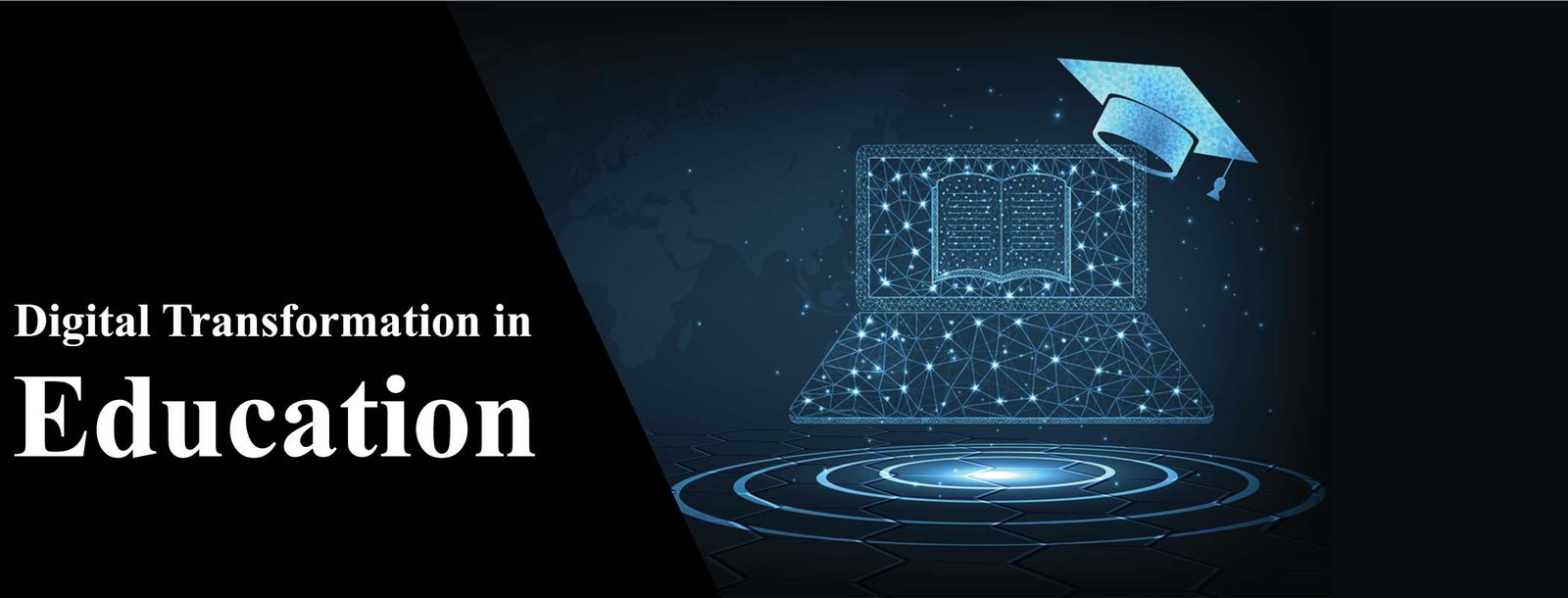Making improvements to the way we educate our students is the main goal of the digital transformation of education. This might entail anything from introducing cutting-edge technology into the classroom to altering how we evaluate and monitor student development. All improvements should be made with the intention of raising overall student performance.
The digital revolution of education has several advantages. One benefit is that it enhances pupils’ learning results. Also, it increases school security by defending against online dangers. Finally, it offers IT assistance to manage and fulfill the demands of a virtual learning environment.
Holinex is aware of the need for IT help in schools for both staff and students.




Key Elements for the Digital Transformation of Education.
Data gathering, data management, and data reporting are the three main pillars of digital transformation in education. Schools may better assess how well they’re doing and where they need to improve by gathering data from a number of sources. It is simpler for educators to obtain what they need fast and make decisions based on correct information when that data is managed effectively. Moreover, publishing such data on a national and international scale enables schools to compare their outcomes to those of other organizations and discover the finest methods from across the globe.
Data collection: It assists enhance education, data are gathered from a variety of internal and external stakeholders in education. This comprises students, parents, instructors, administrators, and other organizations that may offer insightful opinions on how to enhance the educational process.
Data management: By using a centralized system, data management aims to streamline the process of managing data. This makes it possible to guarantee that all interested parties have timely access to reliable information.
Data reporting: Since national and international reporting has increased, it is now simpler for schools to assess their educational efficacy. Moreover, this enables instructors to evaluate their performance in comparison to that of others throughout the globe.
How are schools enhancing teaching and learning using technology?
Schools have started implementing technology to improve the process of teaching and learning. New teaching, grading, and communication strategies are used to accomplish this. Schools are also utilizing technology for research and diagnostic reasons. As a result, the effectiveness of the educational system as a whole is enhanced.
One way that schools are utilizing technology is by implementing fresh teaching strategies. For instance, teachers may now engage pupils in the classroom by using interactive whiteboards and smart boards. Teachers can also give students assignments that must be done online.

Assessment and diagnosis are two more ways that schools use technology. Software applications that assess students’ knowledge of the content given in class are increasingly available for use in classrooms. Also, these tools aid in locating any areas that would require additional instructor support. In order to cut down on wastage of time, some schools are also keeping track of statistics on how long it takes a student to do a job or project.
Last but not least, many leaders in higher education are implementing strategies for digital transformation that incorporate cybersecurity incident response plans (CIRP). They are able to safeguard their data and infrastructure from potential online attacks by doing this. Also, this will enable them to take full use of their financial prospects.
Many schools are using technologies in many different ways to enhance the teaching and learning process. Students can so maximize their educational experience.
How is the Operation of Schools Changing Due to Digital Transformation?
The process of switching from conventional business methods to ones that make advantage of digital technologies is known as digital transformation. To remain relevant in today’s culture, businesses must go through this process. And it’s equally crucial that schools follow suit!
Students’ requirements in terms of a workforce are evolving and will do so in the future. Because of this, it is crucial that schools put their attention to digital transformation right away in order to stay up with the evolving demands of their pupils.
The digital revolution may enhance schools’ operations in a variety of ways. For instance, instructors can access instructional materials from any location in the globe by using internet resources like cloud storage or video conferencing. As a result, they have greater freedom to customize their lesson plans and guarantee that all students have access to the finest materials.
A more individualized learning environment for each student is another way that digital transformation may aid schools. With technology, educators may monitor each student’s development and pinpoint areas in which they require further support. This enables teachers to focus on each student individually and make sure they are moving toward achieving their academic objectives.

Potential Challenges:
While deploying a DevOps approach in a company has numerous advantages, there are also some drawbacks. Lack of communication and cooperation between the development and operations teams is one of the key problems that might occur. It needs a well-trained teaching team and technical setup for a good result.
An issue could develop when businesses try to introduce too many new practices at once. When trying to comprehend and implement all of the new processes, team members could become confused and upset. To give everyone time to acclimate, it’s crucial to go gently and gradually introduce new procedures.
Security is one of the main issues that organizations are now facing. As huge amounts of data have been transferred, cyberattacks became more frequent and violent. To guard against these risks, organizations must have complete security solutions in place for their systems and data.
How can schools make sure they are utilizing digital transformation to their advantage?
While schools have made impressive strides and have begun to see the benefits of digital transformation in education, not just that. The biggest beneficiaries of these modifications are the students, who may now take advantage of new chances for cooperation and learning. Schools themselves gain from improved efficiency and a better capacity to satisfy the requirements of their pupils at the same time.
Schools may make the most of the digital transition in a variety of ways. Training instructors on how to utilize new technology effectively is a crucial component. To assist students to learn in novel and creative ways, teachers must be able to use technology in their teaching methods. Also, school administrators must provide a setting that allows for efficient usage of technology throughout the whole institution. The availability of tools and internet connectivity at all times and locations is part of this.
The advantages of the digital revolution of education are evident for both schools and students.


































